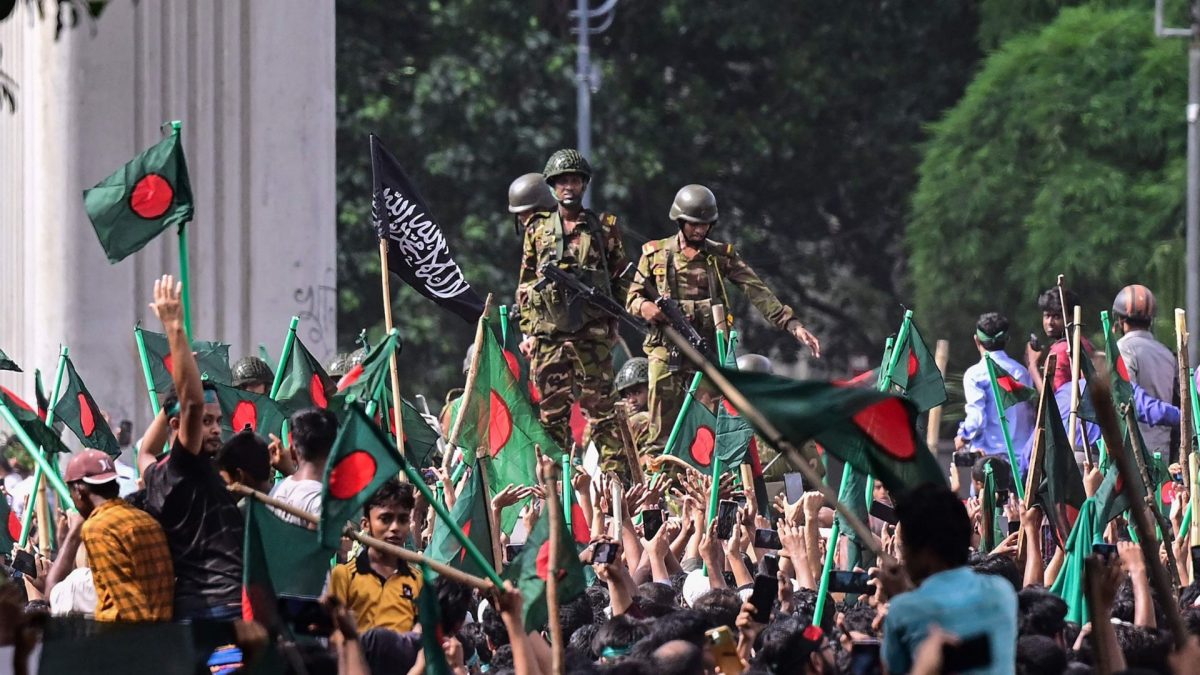Newly examined video footage has revealed that Bangladeshi police killed or injured at least 20 unarmed protesters during two previously undocumented incidents in Dhaka on August 5, 2024, during nationwide protests. These protests occurred as former prime minister Sheikh Hasina resigned and fled the country, marking the final days of her regime.
As per a report in The Guardian, the International Truth and Justice Project (ITJP), a human rights group documenting alleged abuses, analysed the footage, finding evidence that police deliberately targeted peaceful protesters. The findings add to mounting evidence of police brutality under Hasina’s leadership. More than 1,000 civilians were killed in violent crackdowns on protests, eventually leading to Hasina’s downfall.
‘Extraordinary, chilling, grotesque’
Callum Macrae, the filmmaker who analysed the videos, described the footage to The Guardian as “extraordinary, chilling” and “grotesque.”
He said that the police were not under any threat, and there was no legal justification for using lethal force against unarmed protesters.
“It is quite clear from the footage that the police were under no threat and did not believe they were under any threat. They had absolutely no justification in law for using lethal violence against any of the protesters,” Macrae said.
‘Shocking brutality’
Yasmin Sooka, the executive director of the ITJP and a former member of South Africa’s Truth and Reconciliation Commission, condemned the police’s use of live ammunition against the unarmed protesters.
“Considering that the protesters were unarmed and that there were a number of civilians besides the students, it is absolutely shocking that the police used live ammunition against the students and the protesters. It’s horrific when you see the brutality of the violence,” she said.
Sooka also responded to the resignation of Tulip Siddiq, Hasina’s niece, from her role in the British government. Although an investigation cleared Siddiq of ministerial misconduct, Sooka criticised Siddiq for not distancing herself from the violence carried out by her aunt’s regime.
“At no time have I ever heard any statement from her distancing herself from her aunt, or indicating any kind of remorse or sorrow for the atrocities committed in Bangladesh by her aunt’s regime against protesters and civilians,” Sooka stated.
Impact Shorts
More ShortsA wave of police brutality
Over 15 years of power, Hasina’s regime was widely accused of corruption, tyranny, and widespread human rights abuses. As protests erupted across the country in July 2024, Hasina responded with a brutal crackdown, unleashing police violence on peaceful protesters.
Officers used batons, rubber bullets, and live ammunition, resulting in over 1,000 deaths and hundreds of injuries, with some victims permanently blinded. An Amnesty International investigation confirmed the unlawful use of deadly force by police.
By August 5, protests had escalated into an all-out revolution. As hundreds of thousands marched toward Hasina’s residence, the army refused to fire on civilians. Amid this, Hasina fled the country by helicopter.
Two deadly incidents
As part of the ITJP investigation, Macrae and his team analysed two separate incidents on August 5. The first occurred at around 2 pm (local time) outside Jatrabari police station in Dhaka’s southern district. Smartphone footage shows dozens of students outside the station, where police responded by firing shotguns loaded with lethal lead pellets at the crowd. Weapons experts who reviewed the footage confirmed the use of 12-gauge pump-action shotguns.
Despite the appearance of armed forces arriving to disperse the police, separate footage shows an officer throwing a grenade into the crowd before police surged forward and opened fire again. As protesters fled, officers chased them, continuing to shoot at those attempting to escape. At least 19 people were killed or injured, according to the analysis of the footage.
The second incident involved a 20-year-old man, Mohammed Riddoy, who was captured by police during the protests. In the footage, Riddoy is shot in the back at point-blank range. After he falls to the ground, three officers return to drag his body, possibly still alive, past a nearby hospital and towards the police station. Riddoy has not been seen since. His family, unable to recover his body, has pleaded for answers.
Riddoy’s sister, Jasmine Akhter, said, “I want him to be recognised as a martyr. We are a very poor family and I hope the government will take care of my parents.”
Ongoing investigation & accountability
Baharul Alam, the inspector general of the Bangladeshi police, told The Guardian that investigations are ongoing into the role of police officers in the deaths of demonstrators. At least 30 officers have been arrested, and the police are cooperating with international judicial organisations. Regarding the incident involving Riddoy, Alam confirmed the veracity of the footage and stated that two officers had been arrested for his killing.
In a related ITJP report, it was revealed that on July 19 alone, at least 148 people were killed—three times more than initially reported. Of those killed, 40 were under 18 years old. The findings suggest that the death toll from the violence may be far higher than originally estimated.
Since Hasina’s downfall, she, her ministers, and senior police officials have been named in multiple cases, including crimes against humanity, mass murder, and corruption. An arrest warrant for Hasina has been issued, though she remains in exile in India, denying the allegations against her.


)

)
)
)
)
)
)
)
)



